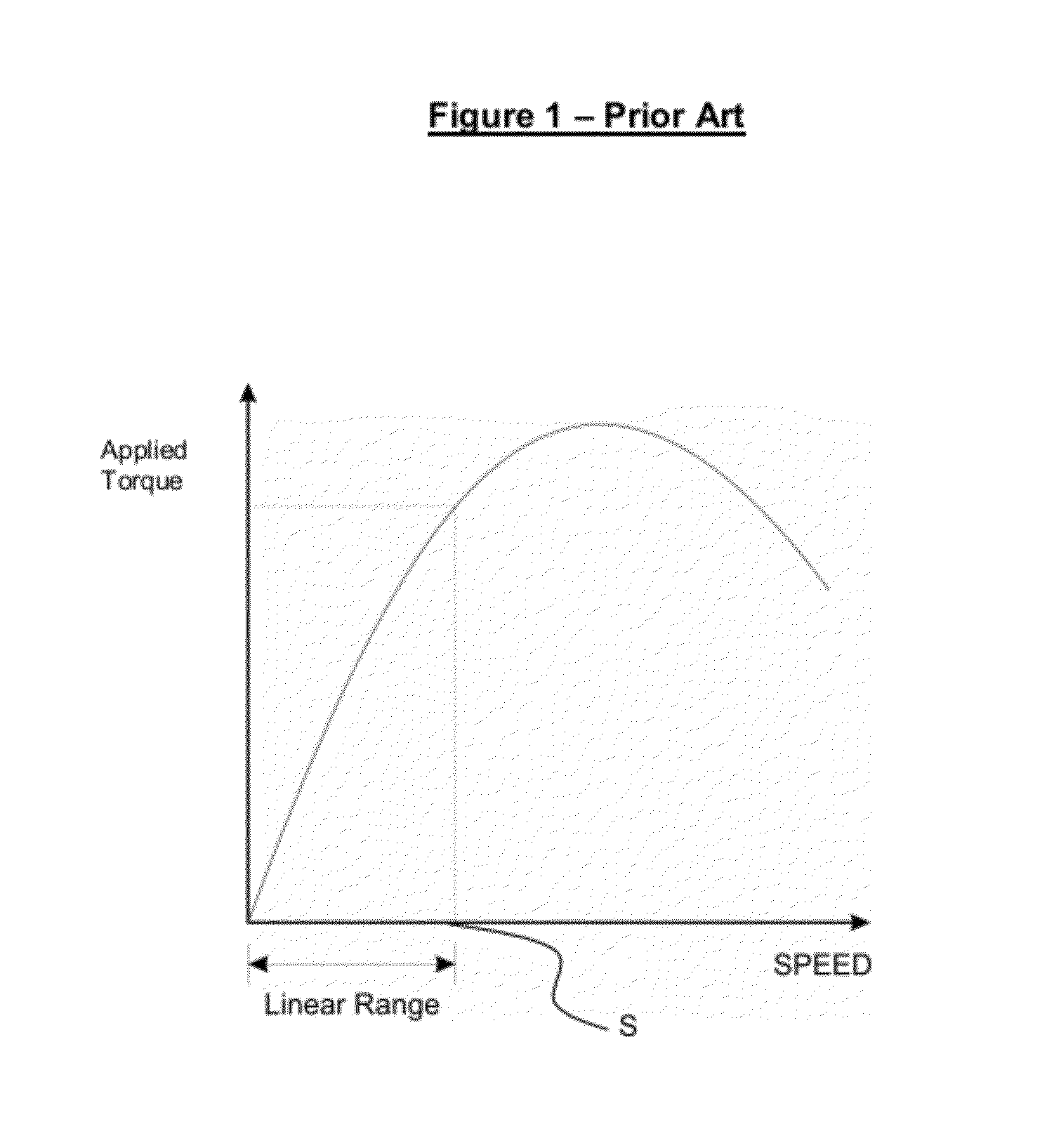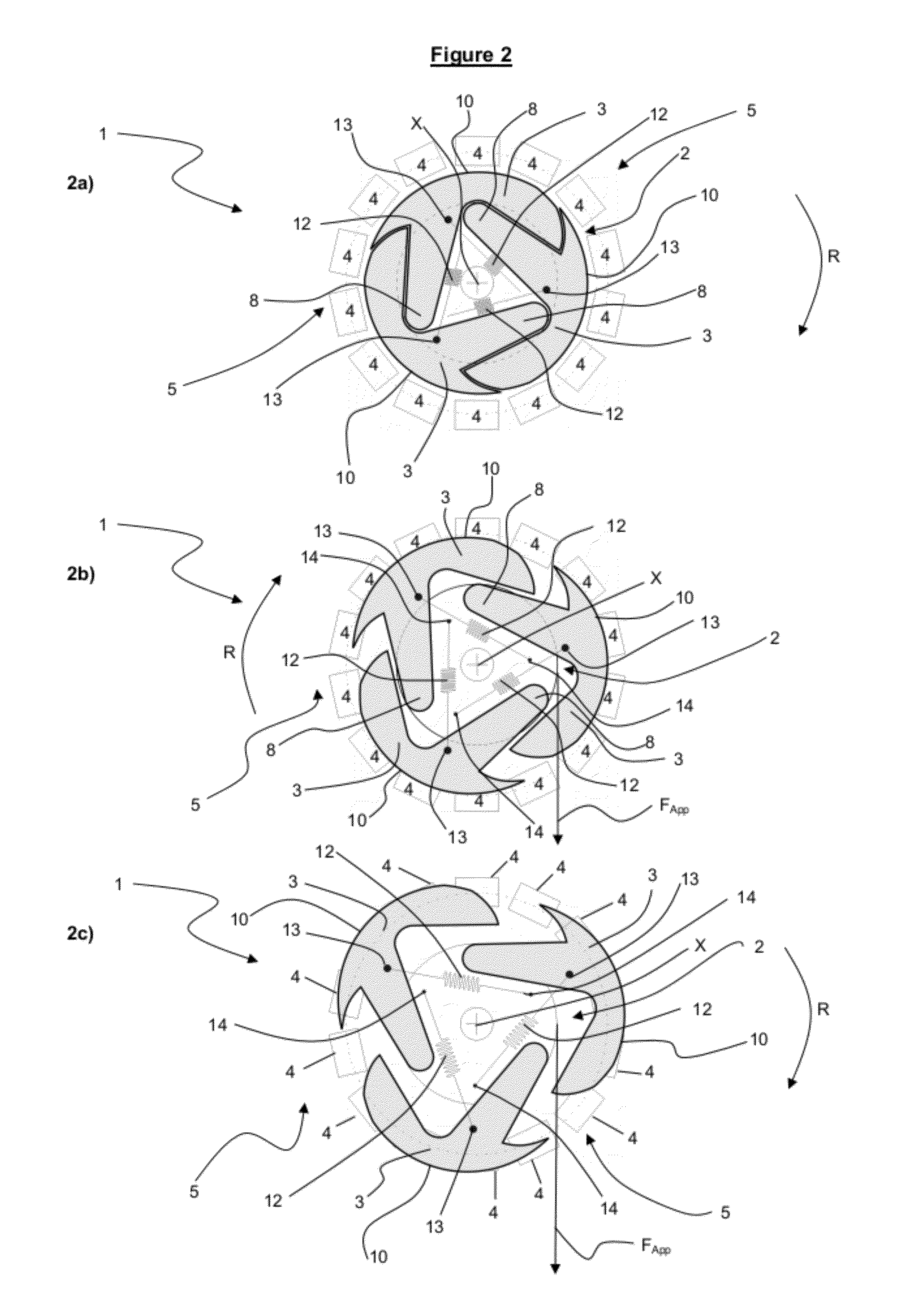Braking mechanisms
a braking mechanism and eddy current technology, applied in the field of eddycurrent braking mechanism, can solve the problems of limiting rotation speed, high braking torque, and clear friction between the brakes, and achieve the effects of increasing the relative speed, increasing the braking effect, and multiplying the relative velocity between the conductive member
- Summary
- Abstract
- Description
- Claims
- Application Information
AI Technical Summary
Benefits of technology
Problems solved by technology
Method used
Image
Examples
Embodiment Construction
[0175]FIG. 1 shows a plot of Torque vs. Speed for an exemplary prior art eddy-current braking mechanism that utilises a conductive disc configured to rotate in a magnetic field. Eddy-currents are induced in the disc when the disc rotates and a reactive magnetic field is generated opposing the applied magnetic field. The opposing magnetic fields create a reactive force opposing movement of the disc through the magnetic field.
[0176]The magnitude of the braking torque applied to the disc is dependant on the magnetic field strength and the speed of rotation, thus as speed increases, the braking torque also increases. This system will limit the speed to a certain level depending on the applied torque. However, the braking torque and therefore equilibrium speed are only linearly proportional to the speed within a predetermined operating range (as shown in FIG. 1), until a threshold ‘characteristic speed’ (S) is reached where the braking torque becomes non-linear and peaks before beginning...
PUM
 Login to View More
Login to View More Abstract
Description
Claims
Application Information
 Login to View More
Login to View More - R&D
- Intellectual Property
- Life Sciences
- Materials
- Tech Scout
- Unparalleled Data Quality
- Higher Quality Content
- 60% Fewer Hallucinations
Browse by: Latest US Patents, China's latest patents, Technical Efficacy Thesaurus, Application Domain, Technology Topic, Popular Technical Reports.
© 2025 PatSnap. All rights reserved.Legal|Privacy policy|Modern Slavery Act Transparency Statement|Sitemap|About US| Contact US: help@patsnap.com



